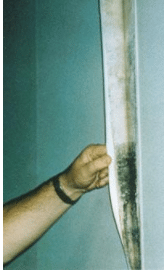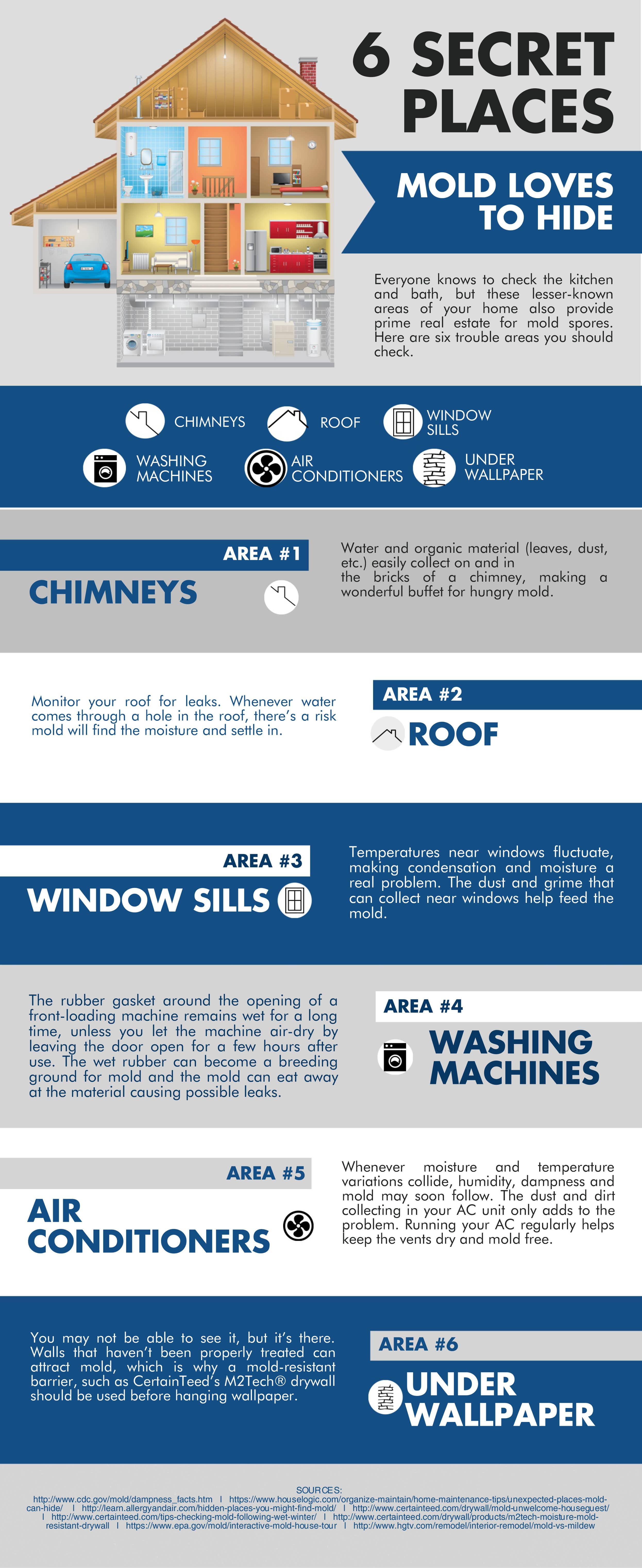
Whether it’s at work or at home, discovering mold (or signs of it) can cause instant dread and for good reason. When left unnoticed or ignored, mold can become a severe health hazard for anyone who regularly spends time in the contaminated building. Plus, mold overgrowth can cause major structural damage to your property (e.g., break down wood or drywall).
With those risks in mind, it’s no surprise that most home and/or commercial property owners faced with a potential mold issue will have one immediate question on their mind:
Do I need to hire a mold removal professional, or can I handle this myself?
As most property related projects go, the answer to this question depends on several different factors. The three main things you’ll need to consider are the size of your mold problem, the surface(s) where it’s growing, and your experience/comfort level with handling mold. Let’s break down how you can assess each of these areas to get the most accurate answer and nip your mold problem in the bud.
1) How big is the area affected by mold? According to the Environmental Protection Agency (EPA), if you find mold covering 10 square feet or more,  you need a pro to remove it. However, there’s a catch – some mold may not always be visible. That means just because the original source you discovered is less than 10 sq. ft. doesn’t mean there isn’t additional mold hidden on the other side the surface (e.g., the inside cavity of your wall). But there are other signs you can rely on to determine if you’re dealing with a bigger affected area beyond what you can see via Today’s Homeowner and Angie’s List, including (but not limited to):
you need a pro to remove it. However, there’s a catch – some mold may not always be visible. That means just because the original source you discovered is less than 10 sq. ft. doesn’t mean there isn’t additional mold hidden on the other side the surface (e.g., the inside cavity of your wall). But there are other signs you can rely on to determine if you’re dealing with a bigger affected area beyond what you can see via Today’s Homeowner and Angie’s List, including (but not limited to):
- Recent leaks or water damage: excess water caused by leaks, flooding, etc., is one of the most common causes for mold overgrowth (since moisture triggers mold spores to grow). As a result, if your property had a recent leak and you discover mold spots, there is very likely additional mold you cannot see.
- Paint bubbles or stains on your walls: if you spot these near the mold-affected area this indicates the presence of moisture and means that you may have had a leak/water damage but just weren’t aware of it.
- Spongy floors: Another sign of excess moisture is a spongy feeling floor. Again, if you find mold growth on or near the floor and it’s bouncy or sagging there may be additional mold beneath your carpeting, tiles, floorboards, etc.
- Bathroom fan not working: if you find mold in your bathroom, one of the most common causes is a lack of ventilation. So, if your exhaust fan isn’t working (or you don’t have one) your mold problem may be bigger than what’s visible.
- Musty smell: if you see mold and there’s a musty smell in that area or in other parts of the home/building, there’s also a bigger chance that it’s a widespread issue.
2) Where (and what type of surface) is the area affected by mold? Generally speaking, if you find a small patch of mold in your bathroom tub or shower, you probably don’t need a mold removal professional. However, if you also experience one of the factors listed above, you may want to consider getting a pro to do a mold inspection. For mold growth outside of your bathroom and especially in hard to reach areas like your attic or a crawl space, your safest bet is to hire a pro. You may get injured trying to remove it yourself, or you may not be able to effectively clean the entire affected area. For more areas to consider when checking your house for other potential spots mold is growing, here’s an infographic via Building Knowledge on the 6 Secret Places Mold Loves to Hide.

3) How experienced/comfortable are you with handling mold?
With the exception of minor mold spots in your bathtub/shower, removing mold isn’t for the faint of heart. In fact, without the right gear and safety protocols in place, the potential of serious harm to you and others is quite high. These harms include:
- Health Risks: According to the EPA, mold produces allergens and at times mycotoxins, which can trigger allergic reactions and may be potentially toxic. If you have asthma or suffer from allergies, attempting to remove mold puts you in immediate risk and is not recommended. Even without any health conditions, DIY mold removal requires protective gear, including googles and gloves.
- Cross-Contamination Risk: Since mold particles become airborne when you remove them from a surface, they can easily spread throughout your entire home or office when the area isn’t properly contained.
In addition, to effectively eliminate the risk posed by mold, you need to purchase the right cleaning supplies. You’ll also need to know how to access and remove mold that’s not immediately visible, such as mold inside walls. Finally, without the expertise to remove the original source of moisture causing the mold spores to grow, your mold problem will be back in no time.
4) Where can you get a free mold removal estimate & evaluation?
Now that you know what to look for and when to hire a professional company, you’re ready to take the next step. The team at Mold Gone wants to help make things as stress-free as possible by offering you a free estimate and evaluation for your mold removal project.
Why Choose Mold Gone for Your Mold Removal Project?
We know there are a lot of mold removal companies for you to choose from in the DC/MD/VA area. Here’s why you’ll get the best possible results for your money by choosing Mold Gone.



